Tackle HVAC Mold Damage in Your Ocean Shores Home
7/12/2024 (Permalink)
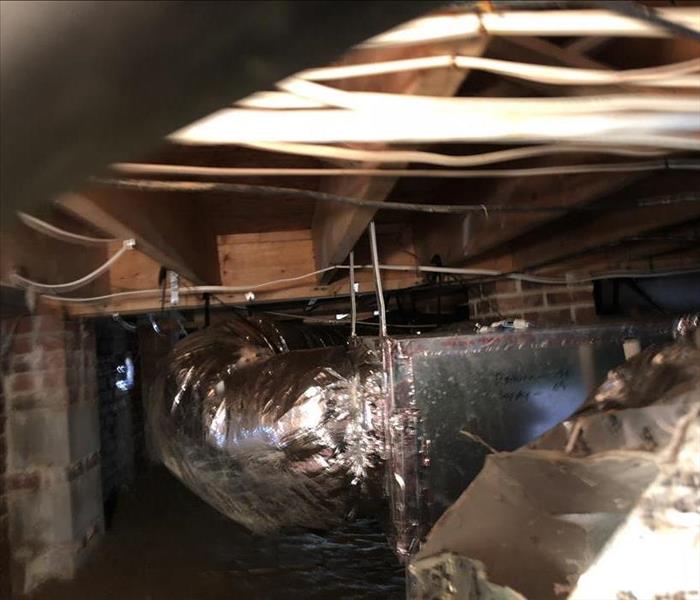 SERVPRO AMRT techs can remove mold from crawlspace ductwork in Ocean Shores. We make your indoor air quality safe again. Here to Help®
SERVPRO AMRT techs can remove mold from crawlspace ductwork in Ocean Shores. We make your indoor air quality safe again. Here to Help®
The Hidden Microbial Dangers Lurking in Your House
Mold is a tricky problem that can affect any home in Ocean Shores. An infestation thrives in moist environments and can cause significant damage if not addressed promptly. SERVPRO® is happy to delve into the impact of mold damage, mainly when it infiltrates HVAC systems, and outline the steps for cleaning and preventing future issues.
How Mold Affects Your Home
Microbial growth spreads quickly and can cause structural damage to your home. It can proliferate in moist areas such as basements, bathrooms, and, most concerningly, HVAC systems. When mold damage occurs in your Ocean Shores HVAC system, it can spread spores throughout the house, affecting indoor air quality and potentially causing further issues.
Mold's Impact on Your Home's Value
Mold infestations can significantly impact your property's value. Potential buyers are sometimes wary of homes with a history of mold problems, as it signals underlying moisture problems that could lead to further damage.
Addressing Microbial Growth in HVAC Systems
- Inspection and Assessment: Our professionals start by thoroughly inspecting your HVAC system to determine the extent of microbial growth.
- Containment: To prevent microscopic spores from spreading during the cleaning process, we implement containment strategies such as physical barriers along with negative air pressure systems.
- Filtration and Cleaning: We use high-efficiency particulate air (HEPA) filters and air scrubbers to capture mold spores from the air. HVAC components are cleaned using antimicrobial treatments, ensuring that all traces of mold are eradicated.
- System Drying: Thorough drying of all components is essential to prevent mold from returning. We use dehumidifiers and other drying equipment to remove moisture from the system.
Preventing Future Mold Growth
To prevent future mold issues, ensure that your home remains dry and well-ventilated. Regular maintenance of your HVAC system, including periodic professional cleanings, is essential. Our special brushes, scopes, and pressurized efforts can readily clean up spores and debris from the air ducts. Address any hidden leaks or water damage immediately and use dehumidifiers in damp areas of your home.
Here at SERVPRO of Grays Harbor & Pacific Counties, we are ready to tackle your mold damage in Ocean Shores. Call us at (360) 533-8667.
How to prevent mold
12/13/2018 (Permalink)
Mold. The very word is enough to make a person cringe.
Yes, mold can be good — it's essential in making brie and penicillin, for example, and necessary for the decomposition of organic matter in nature — but it can also be very, very bad, especially when it grows undetected in your home.
Mold spores spread easily and cannot be completely eradicated.
Mold can grow anywhere: on carpet, clothing, food, paper, and even in places you can't see, such as the backside of drywall, areas inside walls around leaking or condensing pipes, and above ceiling tiles.
Not only is a mold problem difficult and costly to fix, but mold can also produce allergens and irritants (and, rarely, toxins) that may compromise your health.
So what can you do if you're concerned about mold growing in your home?
The best approach is preventing mold before it becomes a problem. The key to mold prevention is simple: moisture control.
Here are nine ways to curb moisture indoors, and the mold that thrives on it.
1. Identify problem areas in your home and correct them. You can't mold-proof your home, but you can make it mold-resistant. Do an audit of your home: where are the problem areas? Does the basement flood? Do you notice frequent condensation on an upstairs window? Is there a water stain on the ceiling from a persistent leak? Preventing mold from growing or spreading might be as simple as ripping up carpet in a damp basement, installing mold-resistant products, or repairing damaged gutters. Or it may be a matter of major excavation and waterproofing. Whatever the case, address the problem now. It might cost some money up front, but it will surely be more costly down the road if mold continues to grow unchecked.
2. Dry wet areas immediately. Mold can't grow without moisture, so tackle wet areas right away. Seepage into the basement after a heavy rainfall, accumulation from a leaky pipe, even a spill on the carpet should be dried within 24 to 48 hours. If you've experienced a flood, remove water-damaged carpets, bedding, and furniture if they can't be completely dried. Even everyday occurrences need attention: don't leave wet items lying around the house, and make sure to dry the floor and walls after a shower. Don't leave wet clothes in the washing machine, where mold can spread quickly. Hang them to dry — preferably outside or in areas with good air circulation.
3. Prevent moisture with proper ventilation. It may be that your routine domestic activities are encouraging the growth of mold in your home. Make sure an activity as simple as cooking dinner, taking a shower, or doing a load of laundry doesn't invite mold by providing proper ventilation in your bathroom, kitchen, laundry room, and any other high-moisture area. Vent appliances that produce moisture — clothes dryers, stoves — to the outside (not the attic). Use AC units and dehumidifiers (especially in humid climates), but make sure they don’t produce moisture themselves by checking them periodically and cleaning them as directed by the manufacturer. Your energy-efficient home may be holding moisture inside, so open a window when cooking or washing dishes or showering, or run an exhaust fan.
4. Equip your home with mold-resistant products. Building a new home or renovating an old one? Use mold-resistant products like mold-resistant drywall or mold-resistant Sheetrock, and mold inhibitors for paints. Traditional drywall is composed of a gypsum plaster core pressed between plies of paper. Mold-resistant drywall is paperless — the gypsum core is covered in fiberglass, making the surface highly water-resistant. Moisture-resistant drywall is especially valuable in areas prone to wetness, such as bathrooms, laundry rooms, basements, and kitchens. Not only is traditional drywall more susceptible to mold than the paperless kind, but it is also difficult to rid of mold, and removal and replacement can be expensive. Mold-resistant gypsum board is also available; the core of the drywall is developed in such a way to prevent moisture absorption, and thus prevent mold growth.
5. Monitor humidity indoors. The EPA recommends keeping indoor humidity between 30 and 60 percent. You can measure humidity with a moisture meter purchased from your local hardware store. You'll also be able to detect high humidity by simply paying attention to potential problem areas in your home. Telltale signs of excessive humidity include condensation on windows, pipes, and walls. If you notice condensation, dry the surface immediately and address the source of moisture (for example, turn off a humidifier if water appears on the inside of nearby windows).
6. Direct water away from your home. If the ground around your home isn't sufficiently sloped away from the foundation, water may collect there and seep into your crawlspace or basement.
7. Clean or repair roof gutters. A mold problem might be a simple matter of a roof that is leaking because of full or damaged gutters. Have your roof gutters cleaned regularly and inspected for damage. Repair them as necessary, and keep an eye out for water stains after storms that may indicate a leak.
8. Improve air flow in your home. According to the EPA, as temperatures drop, the air is able to hold less moisture. Without good air flow in your home, that excess moisture may appear on your walls, windows and floors. To increase circulation, open doors between rooms, move furniture away from walls, and open doors to closets that may be colder than the rooms they’re in. Let fresh air in to reduce moisture and keep mold at bay.
9. Keep mold off household plants. They're beautiful and help keep your indoor air clean — and mold loves them. The moist soil in indoor plants is a perfect breeding ground for mold, which may then spread to other areas of your house. Instead of getting rid of your plants, try adding a bit of Taheebo tea to the water you give to your houseplants. The oil of this tree, which withstands fungi even in rain forests, helps hinder mold growth in plant soil and can be found at natural food stores.
Finally, educate yourself on your region's climate . Knowing what works for your climate and your home is an important first step. If you do run into mold let the experts at SERVPRO of Grays Harbor and Pacific County take care of it. We are available 7 days a week 24 hours a day. Call 360-533-8667!
Mold in Aberdeen, WA
5/25/2018 (Permalink)
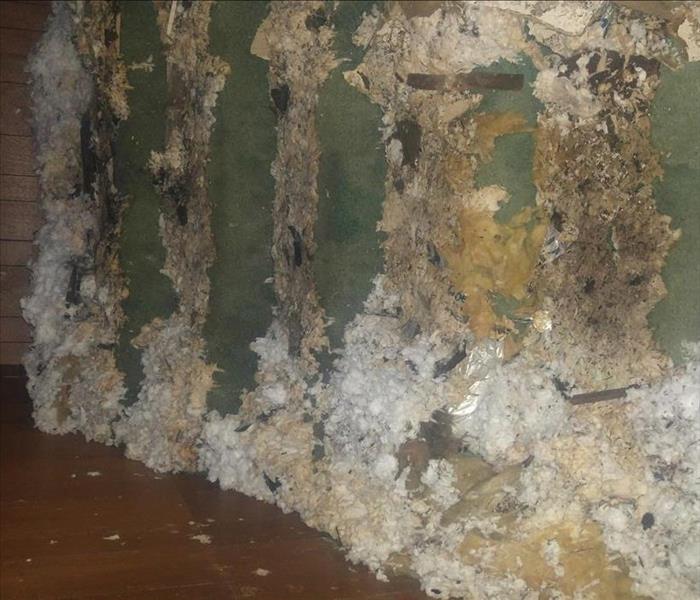 If you’re needing an inspection or a clean-up, call today! (360)533-8667
If you’re needing an inspection or a clean-up, call today! (360)533-8667
A company calls us here at SERVPRO of Grays Harbor and Pacific Counties wanting us to assess a mold job in Aberdeen. They told us a little bit about the situation. The roof failed, and they didn’t know about it and there was some mold in the house. The real estate company was still trying to figure out who was responsible for the damages, so they were at a loss what needed to happen. We went and did our inspection right away and noticed this would not be just a little mold clean up. Every inch of the house was covered in every color of the rainbow. No mold job is too big or too small for us here at SERVPRO. If you’re needing an inspection or a clean-up, call today! (360)533-8667
Mold in Cosmopolis, WA
5/25/2018 (Permalink)
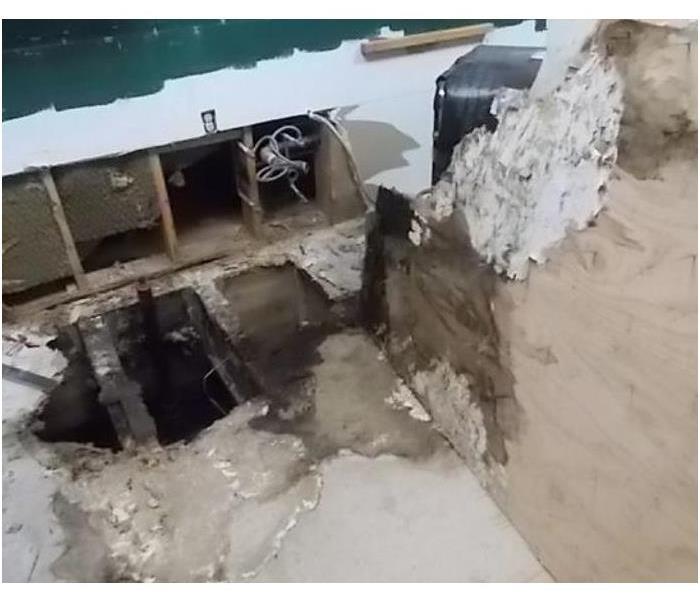 If there are any mold situations you’re involved in, don’t hesitate to call SERVPRO and have us come take a look (360)533-8667.
If there are any mold situations you’re involved in, don’t hesitate to call SERVPRO and have us come take a look (360)533-8667.
In the Cosmopolis Fire Station, there was a floor model ice maker that had been leaking for some time. The firefighters were unaware of the situation and when they finally found out, they called us here at SERVPRO of Grays Harbor and Pacific Counties to fix the situation. In our initial inspection, we noticed there was mold all through the subfloor and up the walls. We set equipment and went through all the steps. We contained the affected areas and took care of all mold and water damages. They were able to keep the fire station up and running throughout the process. If there are any mold situations you’re involved in, don’t hesitate to call SERVPRO and have us come take a look (360)533-8667.
Mold in Vacation Homes
5/18/2018 (Permalink)
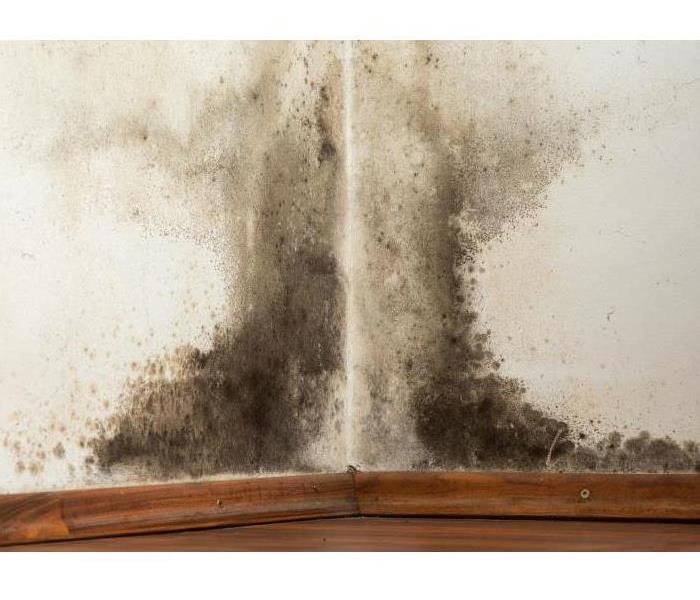 Take care of mold the correct way. SERVPRO can do that for you. (360) 463-9408
Take care of mold the correct way. SERVPRO can do that for you. (360) 463-9408
Having a vacation home can be fun and rewarding but also can lead to unknown damages when not properly cared for. Making sure you inspect potentially hazardous areas is the best way to prevent any mold damages to go unnoticed. For example, lets say that you are leaving your vacation home at the end of the summer and you are not planning on returning until next summer, you leave water running that has a leak. Now that the water was leaking and you didn’t know for almost a year, you come to the house COVERED in mold and previous water damage that most insurance companies don’t cover. SERVPRO of Grays Harbor and Pacific Counties is here to help with the damages but we also would like to give you some tips on preventing this from happening. Clear gutter to carry water away from the house. Fix any areas where mold can grow (missing shingles, loose door frame, window-drywall separation). Set thermostat higher, this will dehumidify inside the house correctly. Look for any standing water in home (sink, shower, fridge, washing machine, and toilet). Eliminate clutter throughout the house and keep clean before departure of home.
Kill Mold Properly
5/17/2018 (Permalink)
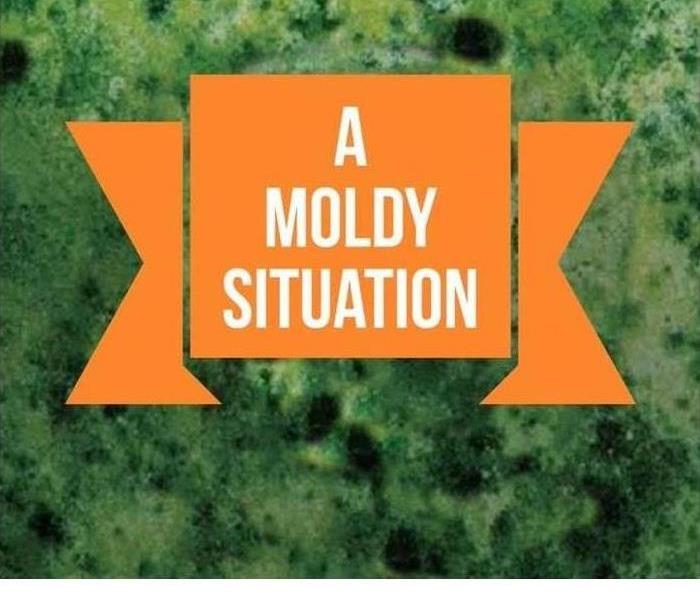 SERVPRO can get rid of mold the correct way. Just give us a call.
SERVPRO can get rid of mold the correct way. Just give us a call.
If you have mold throughout your home, it is best to remove the situation before it gets any worse. If you touch a moldy surface, the next surface you touch will now have those mold spores on them. Most people believe that you can just put some bleach water on the surface, scrub it, and that will kill it. In all actuality, bleach does not kill mold, it just bleaches it. Once you try and scrub a moldy surface and then scrub onto a clean surface, you have just transferred all those mold spores. To kill and remove mold, you need special chemicals. There is also a fogging technique that prevents mold. In a situation like this, it is best to call a professional and at least let them evaluate the situation. Luckily, SERVPRO of Grays Harbor and Pacific Counties can help. Our crew members have mold knowledge and have the ability to get rid of the mold with our cleaning products. Call SERVPRO today (360) 533-8667!
Noticing Mold
5/17/2018 (Permalink)
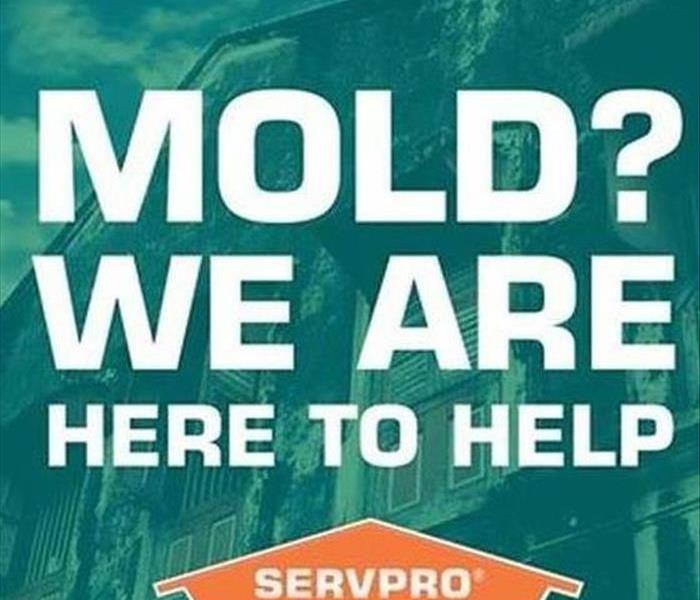 Try to remember that mold can be anywhere but it be taken care of.
Try to remember that mold can be anywhere but it be taken care of.
There are a lot of different ways to tell you have a mold issue in your home. You can walk in and already tell there is a musty smell, that’s the first sign. You could have physical symptoms from mold which can cause serious health problems. These health problems can start out at short term but when not taken care of, can turn into a long term issue. Mold can also grow when there was previous water damage that was not properly dried out. This mold could be on the subfloor, in the walls, in the insulation, and other hidden areas. Another way to tell if you have a mold issue is the physically visible mold. This mold could be anywhere but will most likely be in damp and cold areas that are not well circulated. Mold is not something to mess around with. If you think you have an issue, call SERVPRO today (360) 533-8667!
Mold Where?
12/7/2017 (Permalink)
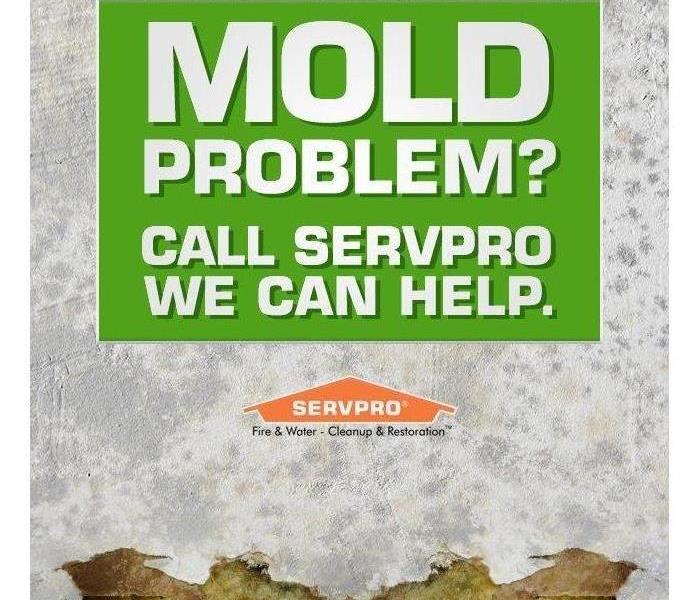 Just a little bit of mold? Don't let it get you sick. Call SERVPRO at 360-533-8667
Just a little bit of mold? Don't let it get you sick. Call SERVPRO at 360-533-8667
Tiny mold spores spontaneously occur almost anywhere, both indoors and outdoors. Making it nearly impossible to remove all the mold from your home or business. Remediation for mold reduces the amount of mold spores and make the mold spore count go back down to its main level. Think about mold and how bad it is for you and your family to be breathing. With these facts it should help get your home back to its norm.
Mold Facts
- Mold can be everywhere both indoors and outdoors
- Mold often creates an odor which are hints of possible mold problem areas
- Mold spores are microscopic and float in the air is could make it hard for you to breath.
- Mold spores love moisture. Mold typically grows in patches when it is exposed to water
- Remediation can't begin until there isn't any out of the norm water or moisture.
- Mold can't just be wiped down it needs to be wiped with chemicals and the proper cleaning equipment
People need to start looking for signs of mold because it can make you extremely sick if it gets bad enough. If your home or business has a mold problem, SERVPRO of Grays Harbor & Pacific Counties can inspect and assess your property and use our specialized training, equipment, and expertise to remediate your mold infestation.
If You See Signs of Mold, Call Us Today 360-533-8667

 24/7 Emergency Service
24/7 Emergency Service





